#hypertrichosis
Explore tagged Tumblr posts
Text

"The weekend is off to a bad start. I forgot my sunglasses 😎 and the float is deflated.🫠 Hopefully, my lunch has been served"😵💫
**********
"Le week-end commence mal. J’ai oublié mes lunettes soleil 😎 et la bouée est dégonflée.🫠 En espérant que mon déjeuner a été servi.😵💫
#atchoumthecat#hypertrichosis#werewolfcat#werewolfsyndrome#werewolf#atchoum#cats#ambrassyndrome#persiancat#gato
56 notes
·
View notes
Photo
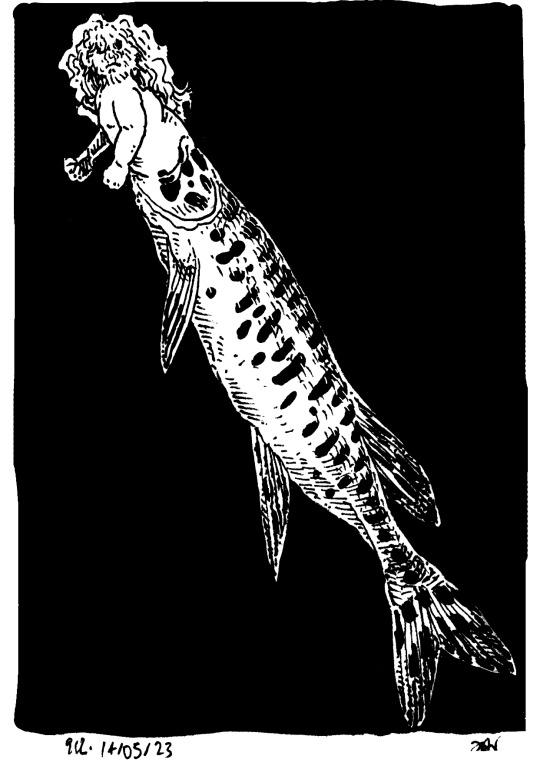
Maymaygwashi, the 228th Known One.
#Maymaygwashi#mermay#Ojibwa#Chippewa#based on a description found on the french wikipedia page ! im too lazy to do an actual translation aha#some people describe them as ''little people'' but the source quoted in the wiki page really sais they have fish lower bodies#merfolk#folklore#America#North America#human#hypertrichosis#fish#alevin#monster#chimera#bestiary#pathology#creature design#ink#912#octem 114#aqva 4#the Known Ones
345 notes
·
View notes
Text
Werewolf Fact #73 - Hypertrichosis, excessive hair growth ("werewolf syndrome"), Beauty and the Beast, and Bluebeard
Today I'll be covering something else clinical: hypertrichosis.

You may have heard of "werewolf syndrome," a condition of excessive hair growth. It isn't to be confused with clinical lycanthropy, which is something else entirely. "Werewolf syndrome" is also called hypertrichosis - and it's occasionally associated with and/or can even be derived from another condition, porphyria, that was also associated with "werewolves" throughout scholarship. Likewise, the most well-known kind of hypertrichosis that involves excessive hair growth all over the body is also often associated with gum and teeth problems; such issues could lead to unusual teeth and mouth shape.
Interestingly, however, despite a lot of modern scholars retroactively assuming that werewolf victims of the past could have suffered hypertrichosis, many of the werewolf legends in question specifically describe lycanthropy sufferers to look quite different. The legends in question are later era ones from the Early Modern period, during which time lycanthropy had become a madness and a disease under clinical and scientific supervision, very much unlike previous time periods, as I cover extensively in my book The Werewolf: Past and Future as well as other werewolf facts.
These legends describe sufferers of the werewolf curse variably to only be "hairy" when in their wolf form specifically (other than, occasionally, having long hair without mention of unusual body hair), highlighting how they were not unusually hairy in human form, or to "always [have] some hairs in the hollow of his hand" (as noted by Sabine Baring-Gould in The Book of Were-Wolves; taken from page 121 of my own edition of his work). Hypertrichosis often specifically does not have hair growth on the palms, conversely. Likewise, many legends of later time periods even specifically say that werewolves are not hairy "on the outside," but that their hair "grows inward" when they aren't in their inhuman form.
Still, scholars entertain the notion of connections that I still question to a healthy degree, so I have studied it as a result. I think it's best to simply summarize it as, the syndrome reminds people of what werewolves are meant to look like, rather than asserting that "this is why some people believed in werewolves" and the like.
Hypertrichosis is rare, and any kind of proper documentation only began perhaps around the 1600s. During this time and for a very long time after, sufferers of hypertrichosis were often called a variety of terms like "ape-men" or "wolf-men." They were considered spectacles and often were brought to noble courts like exotic animals, to entertain high society. Many were circus freaks. Not all examples are before our time, either.
But, Mav, you ask, how is this related to Beauty and the Beast and Bluebeard? Aren't those fairytales?
One famous example of someone with hypertrichosis is the one whose related image began this post: Petrus Gonsalvus, who lived from around 1537 to sometime past 1617. He was called assorted names, such as "the wild gentleman of Tenerife," "the man of the woods," and of course, "the Canarian werewolf." He lived in assorted courts throughout both Italy and France, including the court of Henry II, King of France, around 1547 - he was sent there when he was but 10 years old as a gift from a regent (Margaret of Parma) of the Netherlands. He moved about various courts over time and even married.
Much of Gonsalvus's family inherited his condition (four of his seven children), including some of his daughters. Like their father, they were often traded amongst courts as pets of a sort. Here is Madelene Gonsalvus, a portrait from 1580:

It is believed that the marriage of Petrus Gonsalvus to his wife, a woman believed to be named Catherine and a lady-in-waiting to Catherine de Medici, may have provided some inspiration for the tale of Beauty and the Beast, which was first written in 1740 by Gabrielle-Suzanne Barbot de Villeneuve.
Beauty and the Beast may not be the only fairytale inspired by hypertrichosis, either. The tale of Bluebeard, as also discussed by Baring-Gould in his Book of Werewolves, describes Bluebeard as "His hair and moustache were light brown, and his beard was clipped to a point. This beard, which resembled no other beard" (232), similar to some elements of hypertrichosis variations, as well as mention of his gum condition: "At intervals he ground his teeth like a wild beast preparing to dash upon his prey, and then his lips became so contracted, as they were drawn in and glued, as it were, to his teeth, that their very colour was indiscernible" (233).
Sidebar: if you're interested in the story of Bluebeard and what it was based on, definitely check out Sabine Baring-Gould's The Book of Were-Wolves, as he has an unmatched documentation of it. I don't think it really has a place in a book about werewolves, but obviously I preserved his work in its original condition, so you can find it in my edition of his book, as well. It's not for the faint of heart, but it's morbidly very interesting.
So, connection to werewolves or not, it's still certain that hypertrichosis was seen as an inhuman condition. There are many examples of people who had or have the condition and records of how they were treated throughout history.
As mentioned, I have to wonder how much of this was actually associated with werewolf legends - given legends always explicitly involved transformation, which was the entire basis of it - but scholars eat this kind of thing up. In academia, everyone is always trying to come up with "new arguments" to "add to the conversation" or whatever, so we end up discussing and studying hypertrichosis alongside werewolf legends that specifically state such things weren't a part of the legends. Weird, isn't it?
Anyway, hope you enjoyed the post. Until next time!
And stay tuned for news and updates on a major [werewolf] book release later this year!
If you like my blog, be sure to follow me here and elsewhere for more folklore and fiction, including books, especially on werewolves! You can also sign up for my free newsletter for monthly werewolf/vampire/folklore facts, a free story, and book previews.
Free Newsletter - maverickwerewolf.com (personal site + book shop + free fiction) — Patreon — Wulfgard — Werewolf Fact Masterlist — X — Vampire Fact Masterlist — Amazon Author page
#werewolf#werewolves#werewolf fact#werewolf facts#werewolf wednesday#werewolfwednesday#folklore#folklore facts#mythology#history#wolf#wolves#lycanthrope#lycanthropes#lycanthropy#shapeshifting#shapeshifters#resources#hypertrichosis#beauty and the beast#fairytales#fairy tale
26 notes
·
View notes
Note
this is so random I just thought you would appreciate this. ebay user vm8693 has a wolf rug for sale with that gene that causes an overgrowth of fur (i think?) 😭 they're so cute if you wanted to look at them





He does omg!!
#actual werewolf#hypertrichosis#that's crazy!#I haven't actually seen it on a wolf lol#ask#taxidermy#vulture culture
167 notes
·
View notes
Text
Wolf Girl (2001)
Originally written on October 30th. Forgot it was in drafts.

I watched Wolf Girl because I was in the mood for a werewolf story, more than usual because October. Honestly, I wasn’t expecting it to be as interesting as it was. Specially, the way it portrays characters who intentionally or not broke gender norms. It’s not explicitly an LGBTI movie, but there’s a bunch of androgyny and the bullies grapple with their sexuality.
First off, Tara isn’t a typical werewolf. She has hypertrichosis and is part of a freak show, thus “Wolf Girl.” An experimental injection used to treat hirsutism is what makes her go feral. She’s played by Victoria Sanchez, so she becomes outwardly conventionally attractive even as she devolves. (The poster doesn’t lie. There is nudity.) Before that, a group of townies argue over her sex.

If you’re wondering why she doesn’t just get laser hair removal, she was adopted by a morally gray showman.
(There’s the typical exploitative stuff you’d expect, and when Tara goes missing he forces the caravan to go on without her. Then there’s a scene where he admonishes two townies for being disrespectful towards the freak “baby show,” where infanticide victims are displayed. Harley Dune’s complicated.)
Tara’s love interest is townie Ryan. Who’s the Y2K version of a soft boy. In the first scene he gets called a pussy for “taking his bunny on a walk.” (The rabbit’s actually a lab animal that belongs to his scientist mom.) Ryan also freely admits he was labeled a crybaby in grade school and went to therapy as a result. He calls Tara pretty while talking to a lab rat, when she’s right there. Very demure.

Ryan’s bully Beau likes to admire himself in the mirror. Except for his micropenis, which he’s deeply ashamed of. To the point where he decides to kill Tara when he catches her peeping on him. There’s also a scene where he threatens Ryan because he’s terrified of anyone letting others know he was afraid. It’s not like in either case his victims would be believed. Beau’s just that insecure in his masculinity.

Another bully, Krystal, is sapphic. She tries innocently kissing “shaved” Tara, who she doesn’t recognize. By that point the latter is feral so it doesn’t end well for the former. TV Tropes agrees with me that it’s ambiguous as to whether she’s attracted to Darlene Cates’s character.

The sign outside Athena’s exhibit features her reclining in a one piece. Krystal wanders in by herself where Athena’s dolled up burlesque-ily. Athena sucks the cotton candy Krystal wordlessly handed over off her own fingers. Krystal, still wordless, wanders out. Where she forces herself to upchuck. It’s not a natural reaction. I prefer to think Krystal’s attracted to her, but who knows?
Grace Jones’s character is the most explicitly androgynous. It’s unclear whether Christoph and Christine are personas or what. He/she has a kind of Two Face thing going on. The female side has long hair, mascara, and a dress; the male short hair, a mustache, and a suit. Christoph/Christine jokes about how weeing on the wrong side of Harley gets the showman flustered. The “Two Sides to Every Story” performance also features two crossdressing background dancers who strip on stage.

Anyway, Wolf Girl is an underrated movie with good actors playing interesting characters and it’s on Tubi rn. On second watch I think it’s gonna be a fave.
#Tawney talks#Wolf Girl#Wolf Girl 2001#hypertrichosis#hirsutism#minors do not interact#horror#werewolf#lycanthropy#Blood Moon#Blood Moon 2001#Victoria Sanchez#infanticide mention#bullying#voyeurism mention#Darlene Cates#bulimia mention#vomit mention#internalized homophobia#Grace Jones#urine mention
4 notes
·
View notes
Text

Hieronymus Bosch (c.1450–1516), The Crucifixion of Saint Wilgefortis (detail), c.1497, oil on panel
#art#painting#Hieronymus Bosch#The Crucifixion of Saint Wilgefortis#Saint Wilgefortis#The Bearded Lady#16th century#1500s#legend#Flemish art#Flemish artists#Netherlands#hypertrichosis#women in history#femininity
3 notes
·
View notes
Text

#HERstory Alice Doherty poses with her family in a Victorian photograph, 1900s.
Alice Elizabeth Doherty (March 14, 1887 – June 13, 1933) was an American woman born with the condition hypertrichosis lanuginosa. Via Wikipedia

#AliceDoherty #Victorian #victoriaphotograph #hypertrichosis #hairyisbeautiful
2 notes
·
View notes
Text

This is Lalit Patel. He has an extremely rare condition called Hypertrichosis, also known as werewolf syndrome. According to the media reports, the Indian teen said that people threw stones at him due to excessive hair growth and kids were scared that he would bite them. Unfortunately there is no cure for his condition.
Only 50 known people have had this condition.
10 notes
·
View notes
Text

PORTRAIT OF ANTONIETTA GONZALES (1595) by LAVINIA FONTANA
This strange portrait shows ANTONIETTA GONZALES, a young girl from the CANARY ISLANDS. She and her family, including her father, PETRUS GONZALES, all suffered from hypertrichosis, a rare genetic disorder that causes excessive hair growth throughout the face and body.
At the time, Hypertrichosis was thought to be a sign from GOD (as opposed to a demon curse) or a scientific curiosity. As a result, ANTOINETTE and her family were welcomed in EUROPEAN courtrooms.
FONTANA sketches the girl, no more than ten years old, with a sweet, innocent smile, looking at the viewer lovingly as she holds a piece of paper up to her chest that tells a bit about her personal history.
ANTONIETTA and her family belonged to the court of Countess ISABELLA of SORAGNA, according to the historian MERRY WEISER-HANKS. This portrait shows FONTANA’S talent for conveying a sense of gentleness to her patrons, regardless of their appearance.
It is also a portrait of a high emotional involvement, according to historian ENRICO MARIO DAL POZZOLO, and shows a close relationship between the artist and the sitter. It may be that, since female artists were a rarity in their own right at that time, the sitters shared a sense of being “outsiders”.
#portrait of antonietta Gonzalez#lavinia fontana#mannerism#hypertrichosis#petrus gonzales#Antonietta Gonzalez
4 notes
·
View notes
Photo

This is Lalit Patel. He has an extremely rare condition called Hypertrichosis, also known as werewolf syndrome. According to the media reports, the Indian teen said that people threw stones at him due to excessive hair growth and kids were scared that he would bite them. Unfortunately there is no cure for his condition.
Only 50 known people have had this condition.
12 notes
·
View notes
Text

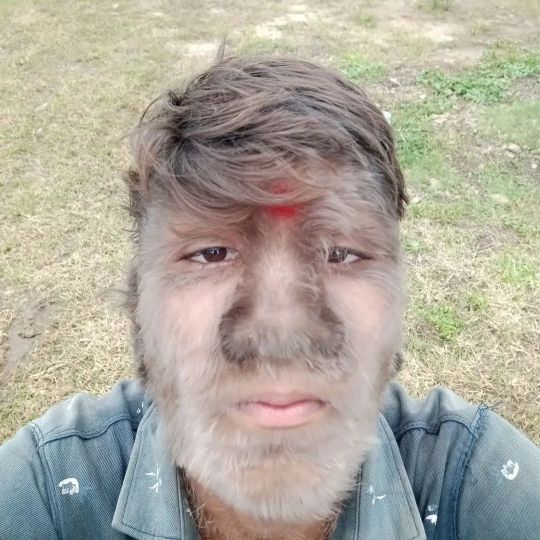
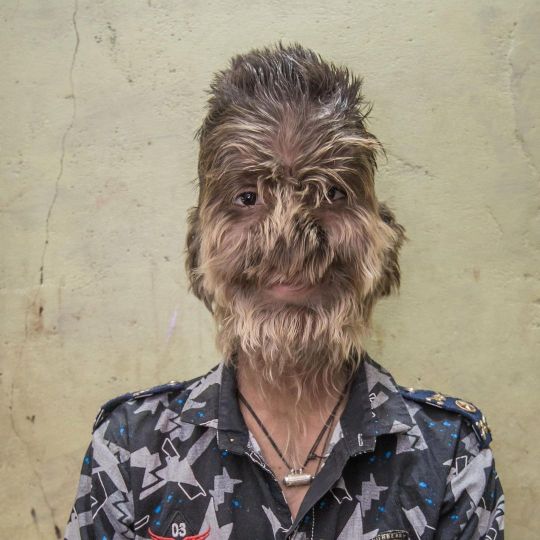
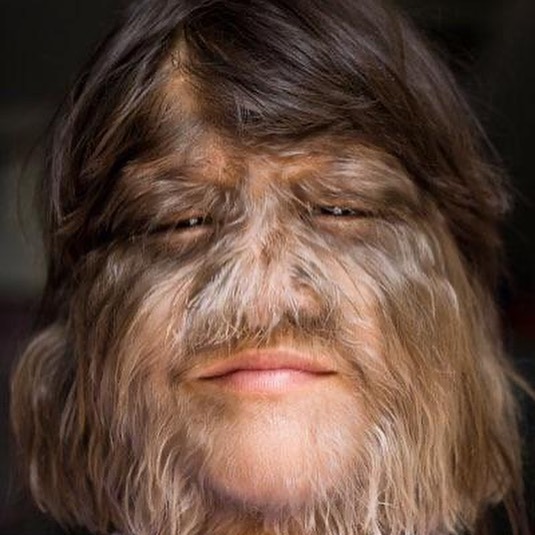

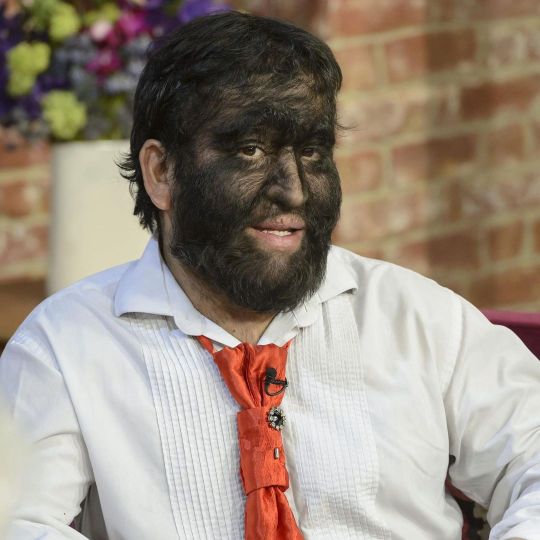
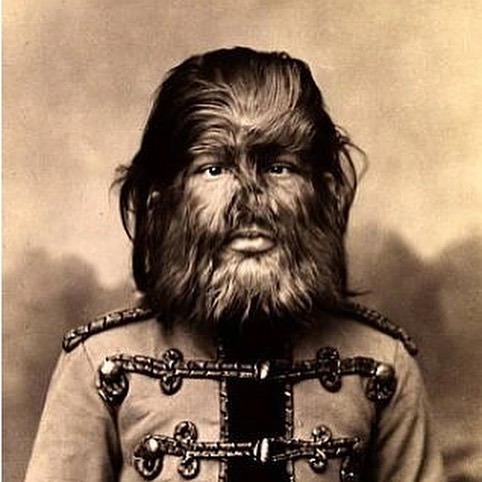

People With Hypertrichosis
Credit: MODERNNOTORIETY @modernnotoriety
#IG#Instagram#MODERNNOTORIETY @modernnotoriety#Hypertrichosis#People With Hypertrichosis#Hypertrichosis (Werewolf Syndrome)
6 notes
·
View notes
Text
When Atchoum focuses on something, it's hard to distract him 👀 👀
*******
Quand Atchoum se concentre sur quelque chose, il est difficile de le distraire 👀 👀
#atchoumthecat#hypertrichosis#werewolfcat#werewolfsyndrome#werewolf#atchoum#cats#ambrassyndrome#persiancat
62 notes
·
View notes
Text





Haven't drawn Tommaso and Chiara in forever. I did a slight redesign of them since I realized they don’t really have a twin vibe(granted, they look different from each other, but they got the whole Disney baby thing going on).
#pizza tower#pizza tower oc#peppino spaghetti#Noise probably wondered if they were benjamin buttoned when Tommaso came out#but he's just got mild hypertrichosis
10 notes
·
View notes
Text

Today's disabled character of the day is Lee Geumhwa's sister from Svaha The Sixth Finger, who has polydactylism and hypertrichosis
Requested by Anon
[Image Description: Photo of Lee Jae-in playing Geumhwa's sister. She is mostly covered in shadows. She has a bald head and pure black eyes. She is wearing a dark green robe and a striped undershirt.]
#spoilers!#polydactyly character#hypertrichosis character#Svaha The Sixth Finger#Svaha The Sixth Finger The Sister#disabled character of the day
8 notes
·
View notes
Text

Lavinia Fontana, Ritratto di Antonietta Gonsalvus (Portrait of Antonietta Gonsalvus), 1595, Château du Blois, Blois, France
Rouillac.com: The Girl with the Hairy Face
[...] Young Antonietta Gonsalvus, aka Tognina Gonzales, went down in history thanks to her portrait painted around 1595 by Bolognese painter Lavinia Fontana (Musée des Beaux-Arts, château de Blois, n°997.1.1). Like her father and most of her siblings, « Tognina » suffered from hypertrichosis, a genetic condition causing an abnormal amount of hair growth over the body. She was the daughter of Tenerife-born Pedro Gonzales, who as a ten-year old was offered to French King Henri II on the occasion of his 1547 coronation. Ownership of such a “wild man” was a source of prestige for the King, who gifted him a part of the Fontainebleau castle’s gardens and had him raised together with the children of his Court. Pedro, renamed Petrus Gonsalvus, wedded Catherine Raffelin after King Henri’s 1559 death. Their marriage may have inspired the Beauty and the Beast fairy tale. After Catherine de Medici’s 1589 death, the Gonsalvus family and their seven children were sent to Italy where they were hosted by various noble families. The sheet with Italian writings held by Antonietta on this painting, similar to the one that can be seen on the portrait of her held in the collections of the Blois Castle, tells the story of her family: “Don Pietro, a savage discovered on the Canary Islands, was shipped to his Serene Highness Henri King of France and from there to his Excellency the Duke of Parma. I, Antonietta, was born from him and today I can be found at the Court of Dame Isabella Pallavicina, the Honorable Marquise of Soragna”. The Gonsalvuses journey from France to Italy is well known thanks to the scientific observations that were made at each stop. Merry Wiesner-Hanks remarkably chronicled it in her 2009 book "The Marvelous Hairy Girls: The Gonzales Sisters and their Worlds" (Yale University Press Publisher). In Basel, physician Felix Platter examined two of the children and commissioned their portraits. Representing Maddalena Gonzales and one of her siblings, they were sent to Archduke Ferdinand II and hung in his castle of Ambras, the name of which was later given to the syndrome represented on these paintings. In 1594, Antonietta, who would have been about fifteen at the time, was examined in Bologna by Ulisse Aldrovandi, whose scientific notes would not be published until 1642 in the book "Monstrorum Historia". It was then that his friend, painter Lavinia Fontana, who had been trained by Sophonisba Anguissola, painted the portrait held in Blois. At the time, Fontana was collaborating with other male and female painters on Aldrovandi's forthcoming publishing project, of which 8,000 watercolors have been preserved. One of them is a portrait of a girl looking like Antonietta, who is depicted with the same flowers in her hair and the same brocade dress as on our painting. However, the inscription on this portrait reads: "A hairy woman of twenty whose head resembles that of a monkey, but who is not hairy on the rest of her body". An object of popular curiosity during her lifetime, either inspiring wild fear or mere defiance akin to the one felt towards an animal, at other times considered as precious enough to be offered as a gift, Antonietta is a little girl like no other in the history of painting. The emergence of this unknown canvas, painted by a female artist and representing a child who disappeared without a trace at the end of the 16th century in Italy, is all the more striking as it coincides with an exciting exhibition on… hair (“Des cheveux et des Poils”) at the Museum of Decorative Arts in Paris.
#art#Lavinia Fontana#Ritratto di Antonietta Gonsalvus#Portrait of Antonietta Gonsalvus#Antonietta Gonsalvus#Antonietta Gonzales#Tognina Gonsalvus#Tognina Gonzales#16th century#1500s#Sofonisba Anguissola#Sophonisba Anguissola#women in art#Italian art#female painters#women painters#hypertrichosis#women in history#articles#Rouillac#long post#favs
4 notes
·
View notes
Link
Excessive hair growth can significantly impact wellbeing. Causes range from medications to hormonal disorders like PCOS. Careful history and exam are critical to identify any underlying condition requiring treatment.
For hirsutism, antiandrogens or insulin sensitizers may be indicated along with hair removal methods. Laser treatments offer longer-term reduction but require multiple sessions. More affordable at-home options include shaving, waxing, bleaching, plucking, depilatories.
What works best depends on the location, type and amount of hair, and patient preferences. Combination therapy is often most effective. Seek expert guidance from dermatologists like Dr. Aria Moradkhani of DermExpertise on customizing a hair removal plan for your needs.
#hirsutism #hypertrichosis #hairremoval #skincare #dermatology
#DrAriaMoradkhani #DermExpertise
0 notes